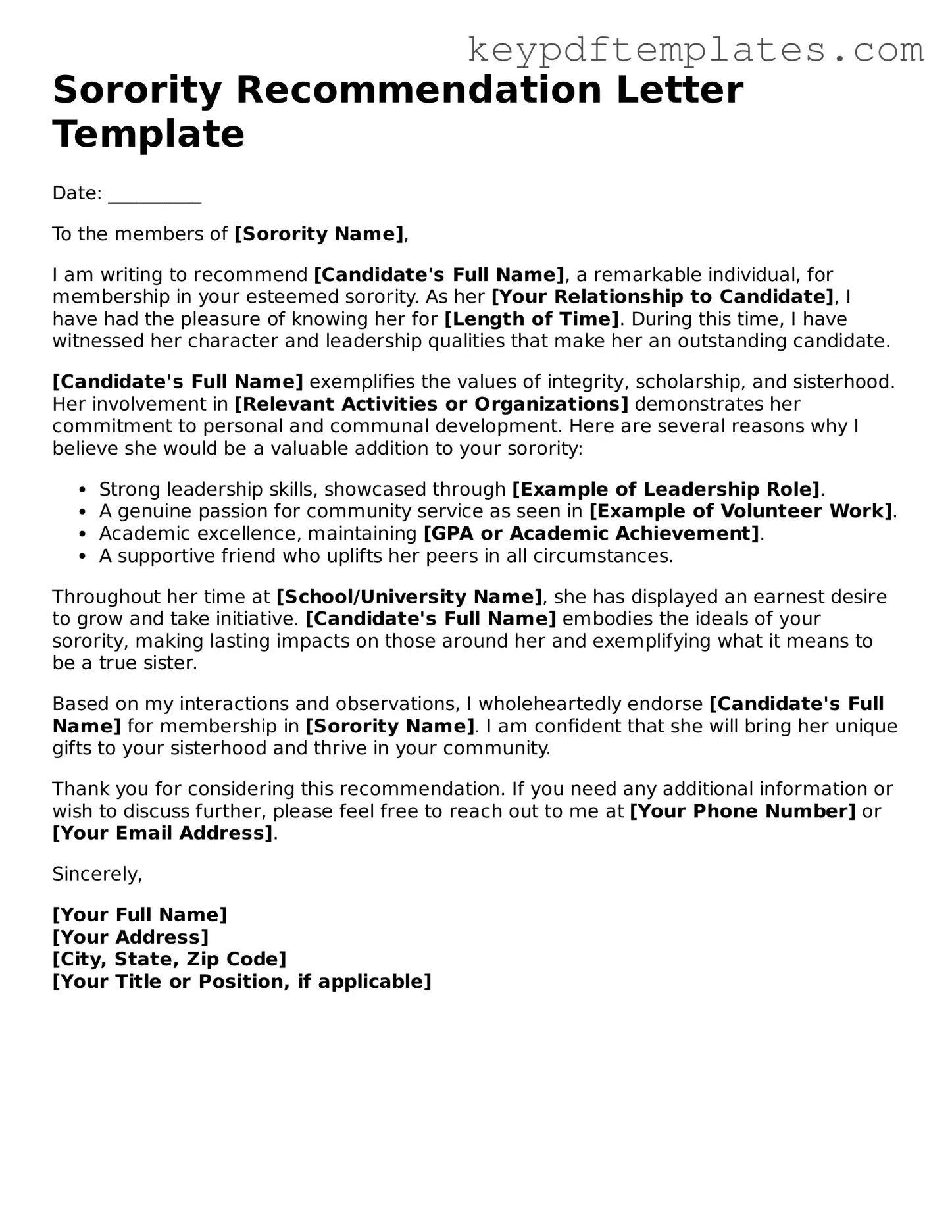Printable Sorority Recommendation Letter Template
The Sorority Recommendation Letter form is a document that helps prospective members secure support from current sorority members during the recruitment process. This letter highlights the candidate's strengths and suitability for membership. It serves as a valuable tool for both the candidate and the sorority, fostering connections and enhancing the overall recruitment experience.
Modify Document Online
